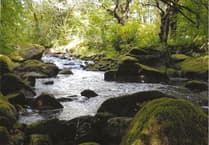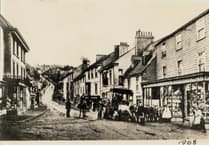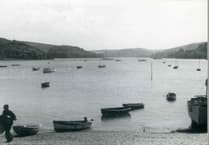Geoffrey Tantum, of South Pool, writes:
Your story ‘Barn conversion given the go-ahead’, Gazette, March 25, gave a balanced account of South Hams Council development management committee’s recent decision to approve plans to convert ‘Prowse Barn’, a small group of agricultural buildings at the head of the creek in South Pool village, used mainly by sheep farmers for more than 100 years. That outcome, and the process by which the DMC reached it, will be of concern to all who care about their local environment.
The parish of South Pool was one of the first in the South Hams to be designated as a Conservation Area and it played a pioneering role three years ago as the first to produce its own Conservation Area management plan in close cooperation with the district council, which formally adopted it.
That plan laid strong emphasis on the need to conserve the unique environment of this beautiful village. It did so largely in response to the wishes of parishioners and their concern at a trend within the district council of granting approval to what they saw as inappropriate developments.
There were two striking features of the DMC meeting that approved the application. The first was the almost total disregard of planning policy, with the one exception being the ward councillor who opposed.
Prowse Barn is at probably the most sensitive village site, at the very head of the creek, and is within an Area of Outstanding Natural Beauty and Conservation Area. The landscape there is widely admired, the subject of many paintings and even depicted on kneelers in the church.
The management plan seeking to preserve or enhance the character or appearance of the area in the most sensitive parts of the Conservation Area was supported by over 90 per cent of parishioners. The National Planning Policy Framework requires ‘great weight to be given to conserving the landscape and scenic beauty in AONBs, which in turn carries a ‘duty to conserve and enhance’ with ‘the highest status of protection in relation to landscape and scenic beauty’.
The Conservation Area designation imposes similar and possibly even more stringent requirements for what are defined as ‘heritage assets’.
The district council’s own Barn Guide states with admirable clarity: ‘In principle the policies mean that conversion [of agricultural barns] to permanent residential use should be considered only in the last resort.’
Finally, the adopted South Hams Local Development Plan contains a wide range of provisions having a direct bearing on the application, notably DP 2, DP 15 and DP 16, which should alone have led to refusal.
So why did the DMC not only ignore both national and its own policies, and above all the management plan it had formally adopted that would have precluded approval, but not even discuss them? They may as well have not existed.
The second striking feature was the DMC’s undemocratic disregard of the views of the parish council and of parishioners. Had the DMC read the management plan? If so it would have known that the overwhelming majority of parishioners endorsed the desire to ensure that the unique environment of the village, especially at the head of the creek, is protected. It is true that letters submitted in support of the application outnumbered those that opposed. But there appeared to be clerical confusion within South Hams Council, so that a number of letters were not posted on the website, and of those in support a number were from people living not only outside the parish, but even outside the county.
To many at the meeting it seemed that the decision had already been taken to approve so that discussion was confined to minor and relatively trivial issues. Some remarks served inevitably to undermine confidence in the planning process: one councillor spoke of the need to ‘keep life in these areas’, apparently unaware that the development is close to the centre of the village and directly abuts a house in which long-term local residents are living and whose amenity will be directly affected. Her further comment, as you reported correctly, that it was ‘a conservation area, not a preservation area’, is incomprehensible.
It is clear that the approval is in breach of almost every policy relating to AONBs, Conservation Areas and development of agricultural buildings. It meets no defined housing need and runs counter to the views of the majority of parishioners.
Can the DMC really be unaware of the resentment and frustration caused by its disregard for local opinion and its persistent approval of controversial planning applications that threaten to blight the unique and cherished South Hams countryside?
In light of this decision, and of the judicial reviews now pending within the South Hams, many are questioning the DMC’s fitness for purpose.




Comments
This article has no comments yet. Be the first to leave a comment.